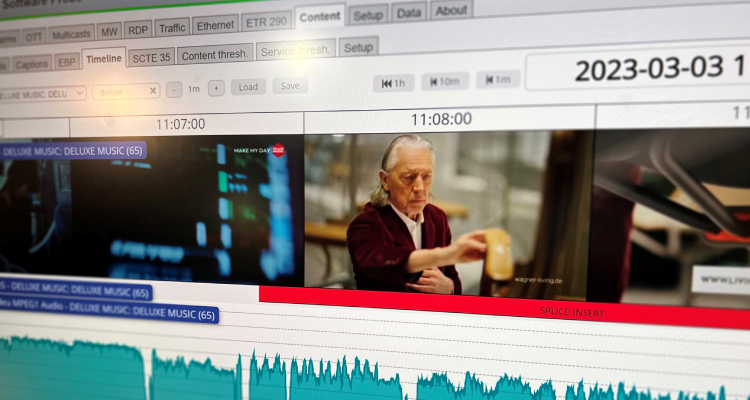
Furthering the incorporation of SCTE 104 and SCTE 35 marker monitoring into their suite of broadcast monitoring probes – including the flagship VB330, Bridge Technologies announced the addition of a continuous log record feature that will grant broadcasters the ability to not only monitor and control SCTE 104 and 35 events through alarming, but also visually document and review the integration of downstream ad insertion on the VB330.
Recording of up to 200 channels in parallel will be facilitated on the VB330 Appliance probe, triggered either by events, or on a ring buffer basis with user-customisable loop duration. Trigger-based recording is prompted by reference to the comprehensive set of SCTE 104/35 error alarms already present within the VB330 (of which there are over 100, drawn from TR 290 standards).
The recording feature uses a pre-fill buffer to ensure that the actual fault itself is recorded (for instance, audio loss or freeze-frame, or in relation to complex PST/SI structure faults) and in this way allows engineers to build up a living cache of records centered around the trigger points themselves. These can then be used for validation, inspection, fault-finding and fault evidence.
Alternatively, recording can be automatically triggered based on the SCTE 35 cue in/cue out marker. A week’s worth of manual recording for any given channel can thus be captured for historical record keeping or analysis. File size is limited only by the storage system to which the files are directed, and can be stored locally, or via a Storage Area Network.
Recorded files are instantly accessible directly from the VB330 timeline, where an easy-to-use recording dashboard has been integrated; containing a record file overview with comprehensive search functionality. The files are intuitively labelled and quickly searchable, making for easy identification, with VLC playback facilitated in less than a second. This means the files can be accessed from anywhere in the world, through any HTML-5 web browser.
The addition of visual playback recording highlights Bridge Technologies’ commitment to equipping broadcasters with the full range of tools they need to ensure that viewers experience the highest Quality of Experience, and advertisers receive the deliverables promised by operators, with data-driven assurances that justify their investment.
Measuring and maintaining records of not just signal integrity and continuity, but actual visual evidence of the quality of image received serves commercial benefit at every operational layer: allowing for improved reporting at a sales and marketing level, but also providing engineers with additional data from which to engage in post-event diagnosis and long-term operational improvement. In this way, this new addition furthers the dual-purpose benefit of the VB330 as both a tool for in-the-moment trouble-shooting, and long-term, C-Suite level decision making.
Speaking of the new addition, Chairman Simen Frostad said: ‘The ability to log every SCTE 104 and SCTE 35 event through both data and visual record carries with it a high commercial value that is truly important to broadcasters, especially in a market where advertising revenue is becoming increasingly important, and the delivery of advertising is becoming increasingly sophisticated’.
‘As we constantly push both the capability and capacity of the VB330, we cement its position as an indispensable tool for broadcasters at both a commercial and engineering level: no other probes on the market maintain this capacity, this depth of functionality, nor this level of intuitive operation’.




